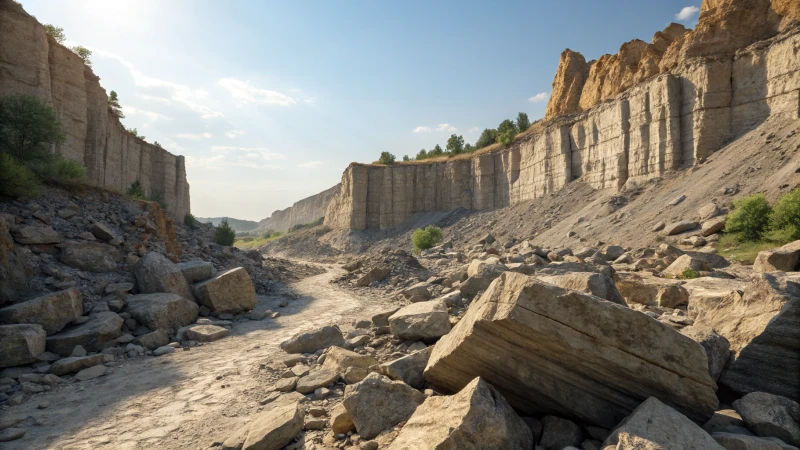Ever wondered why DTH drill bits seem to chip so easily when faced with certain rocks?
Hard, brittle rocks like quartz and granite, along with highly abrasive stones such as sandstone, commonly cause chipping in DTH drill bits. These formations' unpredictable fractures and abrasive surfaces lead to micro-chipping and wear.
I remember this one drilling project where the ground was a mix of challenging quartz and granite. Watching the drill bits struggle and chip away was frustrating, to say the least. It was like trying to drill through a box of razor blades. Understanding these rock types was crucial because it helped me choose the right equipment and adjust our drilling approach. Let me tell you, once I got a handle on these rock formations, we significantly cut down on the downtime and costs related to bit replacement.
Hard brittle rocks cause chipping in DTH drill bits.True
Hard brittle rocks have high compressive strength, leading to chipping.
Soft rocks are the primary cause of DTH drill bit chipping.False
Soft rocks are less abrasive and do not commonly cause chipping.
Why Are Hard, Brittle Rocks a Menace to DTH Drill Bits?
I remember the first time I faced the relentless force of hard, brittle rocks while drilling; it felt like trying to punch through diamond with a pencil.
Hard, brittle rocks are a threat to DTH drill bits because they cause chipping due to unpredictable fractures and sharp edges. Their high compressive strength can create uneven stress on the carbide buttons, leading to potential damage.
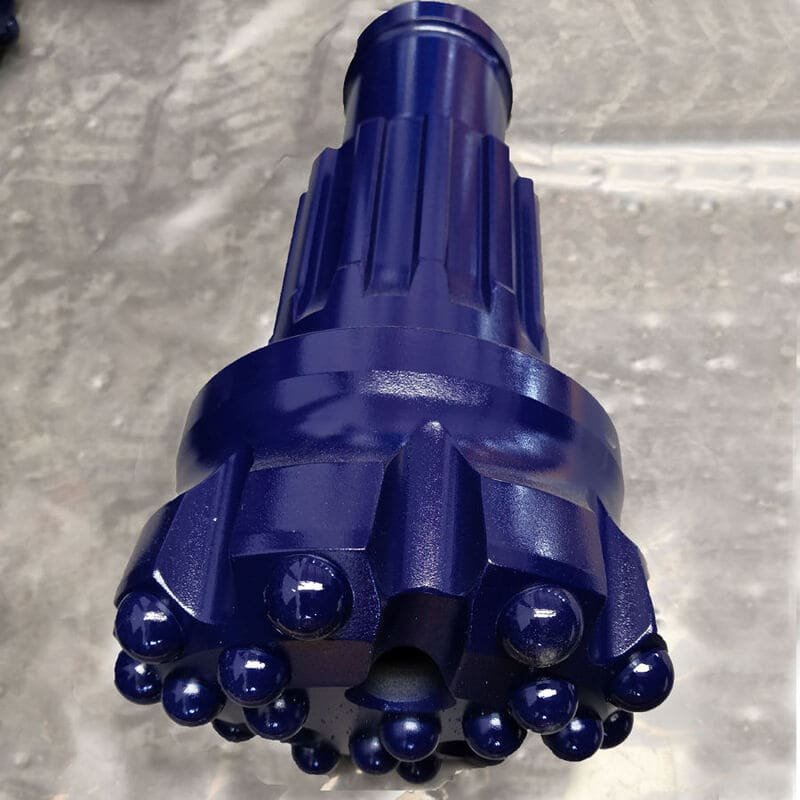
Characteristics of Hard, Brittle Rocks
Imagine facing down quartz or granite with nothing but your trusty drill bit. These rocks, with their high compressive strength, are like formidable opponents that refuse to budge easily. Unfortunately, they lack the elasticity to absorb drilling forces, making them prone to fracturing under the intense pressure of the drill bit. When the drill bit strikes1 these rocks, the fragments are sharp and jagged, posing a serious risk of chipping.
| Rock Type | Hardness Rating | Fracture Behavior |
|---|---|---|
| Quartz | Very High | Unpredictable fractures |
| Granite | High | Sharp, jagged edges |
| Basalt | Moderate-High | Even but tough surface |
Impact on DTH Drill Bits
I recall a particularly challenging drilling project where we encountered a bed of granite. Every strike of the drill was met with a shuddering impact that sent unpredictable stress waves through the bit. The uneven pressure often led to chipping of the carbide buttons. It became clear that without bits designed for such conditions, we were in for a rough ride.
Strategies for Mitigating Damage
The key to survival in such harsh conditions is preparation. Opting for drill bits with enhanced toughness and shock absorption can make a world of difference. I found that tweaking drilling parameters like speed and feed rate also helped reduce the stress impact2 on the bit.
Understanding Geological Variability
Geological variability can be a wild card in drilling operations. For instance, when dealing with layered formations that switch between hard and soft rock, I learned the importance of constantly adjusting my approach. Recognizing these variations is essential for optimizing bit performance and extending its life.
Understanding the unique challenges presented by hard, brittle rocks can transform how we approach drilling projects. It enables us to make smarter decisions about bit selection and techniques, ultimately ensuring efficient operations and prolonging our equipment's lifespan.
Explore more about geological variability3 to enhance drilling efficiency across different rock types.
Quartz and granite have high compressive strength.True
Quartz and granite are known for their high compressive strength.
Basalt has a low hardness rating compared to quartz.True
Basalt is moderately hard, while quartz is very hard.
How Do Highly Abrasive Rocks Impact Drill Bit Longevity?
Ever wondered how tough rocks can affect your drill bits and your budget?
Highly abrasive rocks, packed with minerals like quartz, are the nemesis of drill bits, grinding them down through relentless friction. This constant wear reduces bit lifespan, leading to frequent replacements that can seriously dent drilling efficiency and inflate costs.
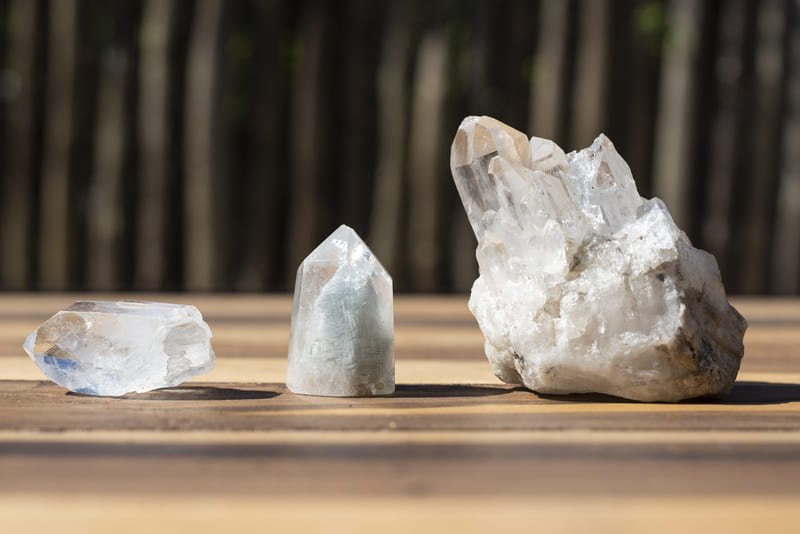
Understanding Rock Abrasiveness
Imagine working with sandstone or shale. These rocks are like nature's sandpaper, filled with hard minerals such as quartz. They don't just sit there—oh no! They grind against the drill bit, shaving away at its surface and edges. This isn't a quick process; it's a slow grind that eventually demands a fresh drill bit.
| Rock Type | Abrasiveness Level |
|---|---|
| Sandstone | High |
| Silicified Limestone | Very High |
| Shale | Moderate to High |
Effects on Drill Bit Materials
Different materials react differently to this abrasive assault. I recall a time when we used carbide buttons in DTH drilling4. They seemed durable until micro-chipping started showing up like annoying little gremlins, slowly but surely reducing our cutting efficiency.
- Steel Bits: Quick to wear down, much like a pencil eraser on coarse paper.
- Carbide-Tipped Bits: More resilient, yet still prone to those pesky chips.
- Diamond Bits: The superheroes for high abrasiveness, albeit with a cost that makes you wince.
Strategies for Minimizing Wear
What can you do? Well, it's all about picking the right bit for the job. Consider bits with wear-resistant coatings or made from tougher materials. Sometimes, it's also about tweaking the drilling parameters—slowing down that rotation or giving it a bit more oomph in feed rate might just give your bit a longer life.
To mitigate these effects:
- Choose bits with enhanced wear resistance coatings or harder materials.
- Adjust drilling parameters such as reducing rotational speed or increasing feed rate to prolong bit life5.
Importance of Regular Maintenance
Regular check-ups aren't just for people; your drill bits need them too! Frequent inspections can catch wear patterns early on. We once implemented a maintenance schedule that drastically reduced unexpected downtimes. Tools like ultrasonic testing6 are great for spotting subsurface wear before it becomes an issue.
By really getting to know those abrasive rocks and using the right strategies, you can boost your drilling performance and save on the costs that come with too-frequent bit replacements.
Considerations for Drill Bit Selection
Choosing the right drill bit involves juggling several factors:
- Rock Hardness vs. Abrasiveness: Some rocks might be tough but not abrasive.
- Project Duration: If you're in it for the long haul, investing in pricier, durable bits might make sense.
- Cost vs. Performance Balance: Weighing initial costs against potential downtime is crucial.
These considerations are vital for effective drilling operations7 and ensuring your equipment performs at its best.
Sandstone is less abrasive than shale.False
Sandstone has a higher abrasiveness level than shale.
Diamond bits are cost-effective for long projects.True
Diamond bits, despite high initial costs, last longer in abrasive conditions.
Why Are Layered Formations Problematic for Drilling?
Have you ever tried drilling through a cake only to hit the occasional nut or piece of fruit? Drilling through layered formations can feel just like that.
Layered formations can turn drilling into a real challenge. The alternating layers of hard and soft rock create stress on drill bits, leading to wear and tear, increased costs, and even potential wellbore instability.
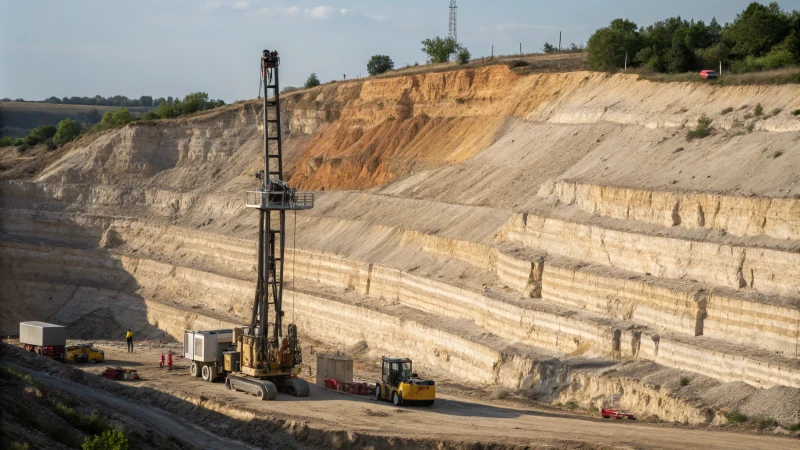
I remember the first time I had to deal with a layered formation while drilling—it was like trying to push a pin through a stack of different textures of paper. You'd think you were making progress through the soft parts, only to slam into something hard and unyielding. This is precisely the issue with layered formations; they're unpredictable and can be downright tricky.
Characteristics of Layered Formations
Layered formations are a geological puzzle, often composed of sedimentary rocks like limestone and shale. These rocks vary significantly in hardness and density, making drilling a complex task.
| Layer | Typical Rock Type | Characteristics |
|---|---|---|
| Top | Shale | Soft, may contain moisture |
| Middle | Limestone | Hard, brittle, reacts with acids |
| Bottom | Sandstone or Siltstone | Variable hardness, often abrasive |
Drilling through these layers is a balancing act. The constant transition between hard and soft rocks means the drill bit8 faces fluctuating forces. If you’re not careful, this can lead to chipping or even complete equipment failure. Imagine trying to cut through a loaf of bread with pockets of stones—it’s just as frustrating and damaging.
Equipment Wear and Drilling Efficiency
I’ve seen firsthand how moving from a soft shale layer to a hard limestone can wreak havoc on equipment. The drill bit suddenly bears a heavier load, leading to:
- Increased Bit Wear: Like trying to use a pencil on sandpaper, hard layers grind down the bit quickly.
- Variable Penetration Rates: Soft layers drill quickly, but hit hard rock, and it’s like slamming on the brakes.
- Stress on Drill Motors: It’s like driving on a bumpy road—constant jolts stress the motor.
Wellbore Stability Concerns
Wellbore stability is another headache with layered formations. The differing pressures between layers can cause:
- Borehole Collapse: Soft layers might cave in without proper support.
- Fracturing: Harder layers may crack under stress, creating unexpected fluid pathways.
Keeping the wellbore stable requires keen monitoring and adjustments to drilling parameters. Utilizing real-time data analysis9 is like having a GPS for these underground challenges—essential for mitigating risks.
Understanding these formations is crucial for choosing the right drilling strategies and equipment. It’s about tailoring operations to suit the conditions beneath us, ultimately improving efficiency and keeping costs in check.
Layered formations increase bit wear during drilling.True
Hard layers erode drill bits quickly, reducing their lifespan.
Soft shale layers cause faster drilling than hard limestone.True
Soft layers are drilled quickly, while hard ones slow progress.
What challenges do fractured or jointed rocks present?
Navigating the rocky road of fractured or jointed rocks can feel like an engineering puzzle, but mastering it opens doors to safer, smarter construction.
Fractured or jointed rocks can be unpredictable under stress, causing structural instability and water infiltration problems. To tackle these issues, thorough geological assessments and tailored engineering solutions are essential.
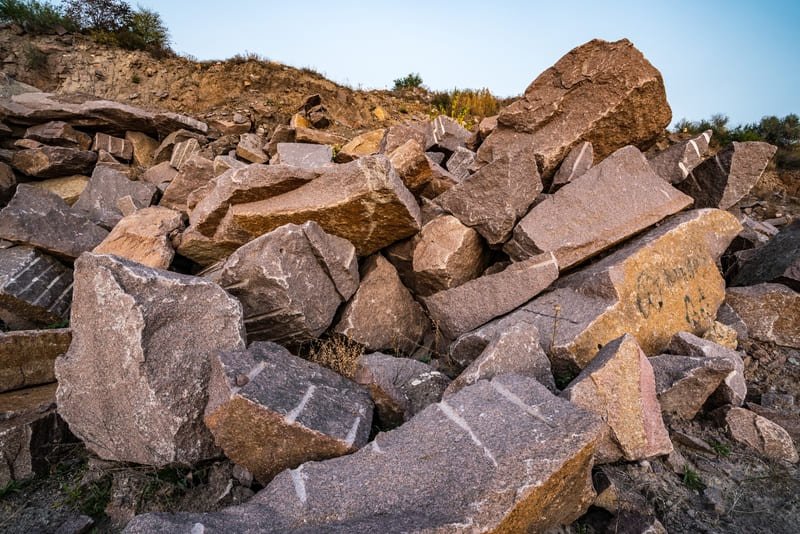
Structural Instability Concerns
I remember the first time I stood at a construction site, staring at the daunting task of dealing with fractured rocks. It felt like trying to piece together a puzzle where none of the edges matched. Fractured rocks can cause significant structural instability, especially in massive infrastructures like dams or tunnels. Imagine building on a shaky foundation—it’s a recipe for disaster. That's why thorough geological surveys are crucial. Engineers often rely on advanced modeling techniques to predict how these rocks will behave and to plan accordingly.
The irregular formation of fractures can cause uneven load distribution, potentially leading to unexpected failures10 during construction or operation.
Water Infiltration Challenges
Another time, during a tunneling project, I learned firsthand how jointed rocks could complicate things. These rocks tend to facilitate water infiltration, which can lead to groundwater seepage—an issue that can derail timelines and inflate costs if not managed properly. Developing effective drainage systems and employing waterproofing measures become non-negotiable in such scenarios.
This characteristic often leads to seepage problems11, increasing operational costs and compromising project timelines.
Environmental Impact Considerations
I've also seen how fractures in rocks impact the environment. They can disrupt aquifer systems and alter groundwater flow, affecting local ecosystems. Industries involved in resource extraction have to tread carefully, understanding these formations to adopt sustainable practices.
Fractures can alter the natural flow of groundwater, impacting local ecosystems significantly, necessitating sustainable practices12.
Mitigation Strategies
The key to overcoming these challenges lies in comprehensively understanding rock properties. With today's technological advancements, like remote sensing and 3D modeling, we gain invaluable insights into subsurface structures. This knowledge enables us to devise safer, more efficient engineering solutions tailored to each unique situation.
| Challenge | Impact | Mitigation Strategy |
|---|---|---|
| Structural Instability | Uneven load distribution | Advanced modeling & reinforcement |
| Water Infiltration | Increased groundwater seepage | Effective drainage systems |
| Environmental Impact | Altered groundwater flow | Sustainable extraction practices |
Tailored solutions based on thorough geological assessments are key in addressing the challenges posed by fractured or jointed rocks across different sectors. This approach not only enhances safety but also optimizes resource utilization. Understanding the intricate dance between geology and engineering leads us to innovative solutions that effectively mitigate risks.
Fractured rocks cause structural instability in dams.True
Fractures lead to uneven load distribution, risking dam stability.
Jointed rocks prevent water infiltration in tunnels.False
Jointed rocks facilitate water seepage, complicating tunnel projects.
How does transitional geology impact drilling performance?
Navigating the world of transitional geology can feel like an adventure, filled with unexpected turns and challenges that test both skill and equipment.
Transitional geology impacts drilling by creating zones of varying rock hardness and composition, resulting in unpredictable drilling conditions. This demands flexible strategies to counteract issues like bit chipping and efficiency loss.

I remember the first time I encountered transitional geology on a drilling site. It felt like trying to predict the weather—unpredictable and full of surprises. We were drilling through what seemed like endless soft sediment when suddenly, the bit hit hard rock. The feedback from the rig was immediate and intense, forcing us to adjust our parameters on the fly.
Understanding Transitional Geology
Transitional geology is like nature's obstacle course, where geological formations can change abruptly, such as moving from soft sediments to hard rock. These transitions can result in variable feedback from the drilling rig, complicating parameter adjustments.
Challenges in Drilling Operations
-
Variable Rock Hardness
- Impact on Equipment: Picture this—you're smoothly drilling, then bam! A hard rock layer smacks your drill bit, causing stress and potential chipping.
- Operational Adjustments: Just like switching gears on a bike, we have to tweak drilling parameters13 such as speed and pressure to navigate these changes effectively.
-
Inconsistent Formation Composition
- Material Changes: Moving from soft to hard rock is like going from butter to ice—each needs a different tool.
- Solution Strategies: Multi-purpose bits are our Swiss Army knife, designed to handle varied conditions and reduce wear.
Adaptive Drilling Strategies
-
Monitoring and Analysis
With real-time monitoring tools, it's like having a GPS for geology. They help us anticipate changes and make informed decisions about bit selection14 and techniques tailored to specific geological challenges. -
Technological Innovations
Automated systems are like having an autopilot for drilling, adjusting parameters dynamically to minimize equipment damage.
| Geological Feature | Potential Issue | Mitigation Strategy |
|---|---|---|
| Sudden Rock Transition | Bit chipping | Use adaptive bit designs |
| Layered Formations | Uneven wear | Real-time parameter adjustment |
| Fractured Zones | Torsional stress | Advanced bit materials |
Understanding how transitional geology affects drilling performance means tackling these challenges head-on with innovative solutions. As technology evolves, so do our strategies, making us ever more adept at navigating the complexities of these geological zones.
Variable rock hardness impacts drill bit longevity.True
Transitional geology causes stress on drill bits, increasing wear.
Real-time monitoring tools have no effect on drilling performance.False
They help anticipate geological changes, improving parameter adjustments.
Why Do Veined Materials Cause Bit Chipping?
Remember the last time you tried drilling into a beautiful piece of quartz or marble, only to find your bit chipping away? Understanding how these veined materials affect your tools can save you a lot of frustration.
Veined materials, like quartz and marble, contain hard minerals that create high-resistance impacts during drilling, leading to bit chipping. Choosing the right bit and adjusting drilling parameters are key to minimizing damage.
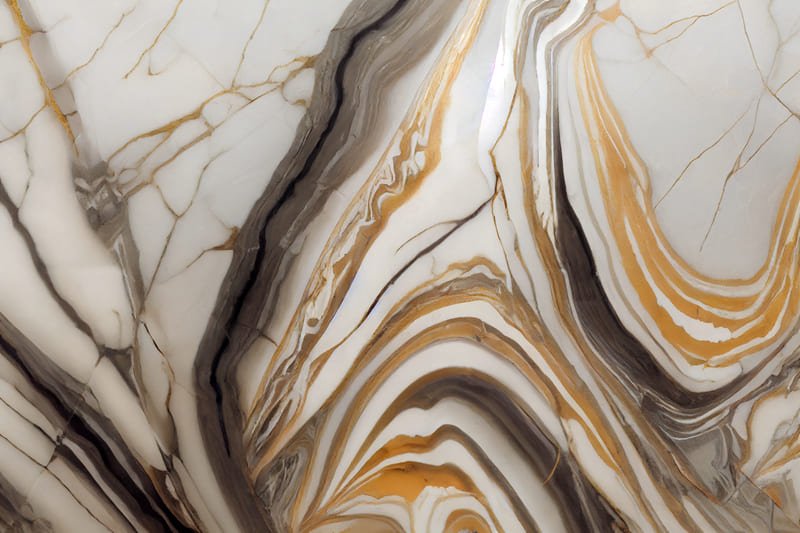
The Composition of Veined Materials
I remember the first time I tried to drill through a piece of marble for a DIY project. The veins running through it were like little highways of hardness, making it so much tougher than I expected. These veins typically consist of minerals like quartz or calcite that are harder than the surrounding rock. When your drill bit hits these, it's like hitting a speed bump that your bit wasn't ready for—leading to chipping if you're not careful.
Effects on Drill Bit Performance
Hardness Variability
I once made the mistake of not considering the hardness difference in materials during a job, and it taught me the hard way. The stress these hardness differences put on your drill bit can lead to premature wear and chipping, especially around the edges. It's like asking your car to drive on two completely different terrains at the same time.
A table showing the comparative hardness of common veined materials:
| Material | Base Hardness | Vein Hardness |
|---|---|---|
| Granite | 6-7 (Mohs) | 7-8 (Mohs) |
| Marble | 3-4 (Mohs) | 7 (Mohs, Quartz veins) |
| Sandstone | 6-7 (Mohs) | 7 (Mohs, Quartz veins) |
Drilling Parameters
Adjusting drilling speed and pressure can make a big difference. I learned from experience that lower speeds and moderate pressure help avoid those abrupt impacts when transitioning between different material types. Think of it like easing your car over a speed bump instead of speeding over it.
Optimizing Bit Selection
Choosing the right drill bit is crucial. I've found that bits with reinforced carbide tips or special coatings handle high-impact forces much better. It's like wearing the right shoes for a hike—you wouldn't go in flip-flops, would you? Consider selecting bits with designs that reduce friction and heat generation to further prevent chipping.
Understanding Geological Context
In my line of work, understanding the local geology has been invaluable. By consulting geological maps or using geotechnical surveys, I've been able to prepare ahead of time for veined formations. This proactive approach not only saves bits but also boosts efficiency by allowing operators to select appropriate equipment15.
Practical Applications in Construction and Mining
In mining or construction, especially when working with natural stone, having drill bits optimized for veined materials can significantly cut down on costs. It means fewer interruptions and more precision in the finished product.
For more strategies on dealing with veined materials, consider looking into case studies or industry reports that highlight specific applications and innovative solutions16.
Veined materials consist of a softer base rock and harder veins.True
Veined materials have softer base rocks with hard mineral veins like quartz.
Drill bits should have reinforced carbide tips for veined materials.True
Reinforced carbide tips help withstand high-impact forces in veined materials.
Conclusion
DTH drill bits commonly chip when drilling hard, brittle rocks like quartz and granite, as well as abrasive stones such as sandstone, due to their unpredictable fractures and sharp edges.
-
This link will provide insights into how different rock types impact drilling equipment performance. ↩
-
Discover strategies to optimize drilling in tough geological conditions. ↩
-
Learn how geological differences influence drilling efficiency and equipment choice. ↩
-
Learning about DTH drilling aids in selecting compatible bits for abrasive environments. ↩
-
Strategies to extend drill bit lifespan can save costs and improve efficiency. ↩
-
Ultrasonic testing can detect wear early, preventing unexpected failures. ↩
-
Best practices improve drilling efficiency and reduce equipment wear. ↩
-
Explores suitable drill bits designed to handle the stress of varied rock layers, enhancing bit longevity. ↩
-
Discusses how real-time monitoring can optimize drilling parameters, improving safety and efficiency. ↩
-
This link offers insights into how fractures cause structural failures, guiding engineers in planning safer infrastructures. ↩
-
This link explores solutions to manage water seepage in jointed rocks, crucial for efficient tunnel and mining operations. ↩
-
This link provides strategies for sustainable resource management in areas with significant rock fractures. ↩
-
Explores how adjusting parameters like speed and pressure can prevent bit chipping in transitional geology. ↩
-
Discusses the types of drill bits suitable for handling different geological conditions effectively. ↩
-
Understanding equipment selection based on geology helps ensure efficiency and reduces damage in varied terrains. ↩
-
Discovering new solutions in drilling technology can reveal methods to better handle challenging veined materials. ↩

